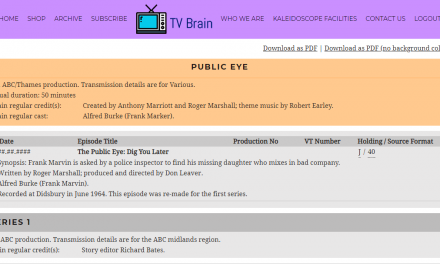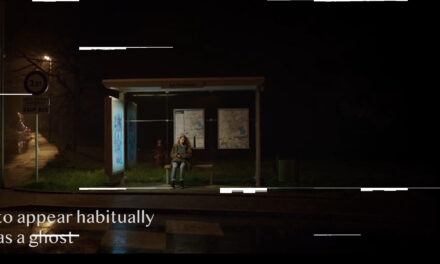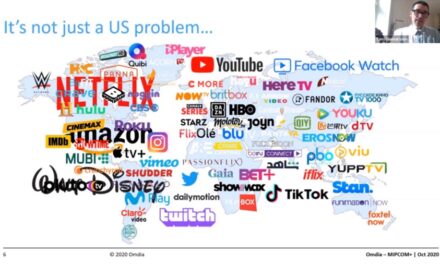TV has traditionally been seen as domestic, and often as social: stereotypical images of families gathered around the television readily come to mind. While we may think such images nostalgic in an era where many households and individuals are multi-screen, even those living alone can watch in company via social media. Research published by Thinkbox (a project I discovered was called TV Together after I’d selected this title for my blog) suggests that “shared viewing has remained consistent despite the proliferation of viewing technology (both in and out of home), our ability to time-shift content, and most importantly, a 16 per cent increase in the number of single households in the UK” and found that “52 per cent of our live viewing (including single households) is shared and time-shifted viewing is even higher at 56 per cent.” My students, when I ask them to log their viewing and discuss it, often describe how some television is best watched alone, other types of TV are best enjoyed in company. The pleasures of watching TV together are, perhaps, fairly obvious but they are not always about the content of what is being watched.
Take football, often viewed in a group. Watching a televised football match in a pub with a large number of people involves a mixture of unity and partisanship. Academic writing about sport on television often notes its relation to and negotiation of identity, especially national identity. Watching an England European Championship match in a pub while on holiday on the Scottish island of Mull last summer made me acutely aware of both. This pub was in a small village and served the community as a local but was also one of a handful of venues offering visiting tourists an evening meal. On the night of the England v. Italy match, most of the tourists who came in to eat, drink and watch the game were, predictably, English. The Scottish locals hung back, standing around the bar, clearly mindful that many livelihoods in the community were reliant on tourism. Add to this a goalless match ending in a long penalty shoot-out that England lost and the atmosphere was a very complex mix of dynamics around national identity.
A more uncomplicated sense of togetherness is at the heart of my next example. I don’t think I will ever forget watching the last episode of Blackadder Goes Forth (‘Goodbyeee,’ first broadcast on 2 November 1989) a period sitcom, set for this final season during World War I. In a packed student common room at university we watched in silence as the comedy gave way to serious drama and all the characters went over the top. The closing image of them running towards the enemy faded to grey. The usual end credits were omitted and the episode ended with a field of poppies. I’ve since read other comments about the emotional impact of this finale (see, for example, Michael Brook at BFI ScreenOnline) but for me this is tied up with that group experience. There must have been around 60 or 70 people watching, yet not a single one spoke as they left the room.

At home watching with family or friends also shapes our viewing. When I cover audience and fandom in my science fiction class, I tell the story of watching Doctor Who with my sister and her family while my partner and I stayed with them on holiday. For three consecutive evenings we sat round the television and watched episodes that my nieces had borrowed from the local library on DVD. The youngest had to have her sonic screwdriver in her hand when the opening theme tune started. By the second night we were all standing up, doing the sonic screwdriver dance to the title music. While I remember the episodes we watched, it’s the shared experience, the – for me – rare family context, that makes this viewing memorable. The sonic screwdriver dance may be unique but for adults that sense of repeating our own childhood experience of watching Doctor Who with another generation is surely replicated across the country.
Thinkbox’s research found that “most shared viewing is with one other person.” I watch TV for both work and for pleasure and think myself lucky that my partner enjoys watching many of the same things. We’re currently watching Person of Interest on Channel 5. Generally we view it timeshifted and so we skip through the adverts. According to the Thinkbox project, crime drama was one of the top TV genres that people like to watch together. There are fairly obvious reasons for this: it encourages viewers to put the puzzle pieces together and try to work out whodunit, or what happened, or who the next victim will be. And my partner and I do these things while watching Person of Interest. But a large part of our enjoyment in watching together is derived from the show’s sponsor and the break bumpers advertising Bahlsen Choco Liebniz. Mimicking characteristic cctv shots from the show, the camera zooms in on a plate of delicious looking biscuits and a voice intones, “who’s watching yours?” I don’t see myself as someone taken in by advertising, but one evening I found myself picking up my iPad and googling Bahlsen while watching the show. The following weekend, my partner brought some Choco Leibniz home with the rest of the shopping. The biscuits were tasty but our sharing, parodying of and relishing the tagline and the slightly exotic sounds of the brand name is longer lasting. The show hasn’t even finished its first season and the sponsor may change next year, but Person of Interest will be indelibly associated for us with these biscuits and their tagline. For years to come we’ll be asking each other, “Who’s watching yours?”
Much of what I’ve written may seem anecdotal and overly personalised. It is. Yet many people, not just academics studying television, watch TV and relate to it through the kinds of social dynamics and contexts of viewing I’ve described. Those who write for TV know the pleasure and the dynamics of watching it together. Witness apparently bad boy vampire Spike bonding with Slayer Buffy’s middle class mum Joyce over their shared passion for Passions during Buffy the Vampire Slayer’s “Checkpoint” 5.12 (“Oh, do you think Timmy’s really dead?”). Shared TV viewing is about normality. A vampire suddenly becomes an everyday guy because he’s desperate not to miss his favourite soap opera. It forms an instant bond. Likewise, tweedy Brit Giles’ experience of viewing with Spike when they are forced to share living quarters (“I watched Passions with Spike,” he confesses to Buffy, “Let us never speak of it,” “Real Me” 5.2) is instantly recognisable to anyone who’s sat through (and been sucked into) programmes they might never have watched left to themselves. Relationships are about this kind of give and take. Sharing TV builds relationships and makes us feel normal. Witness all those perfect moments in Being Human where ghosts, vampires and werewolves proved they were being human by gathering on the sofa to watch TV, together.


Lorna Jowett is a Reader in Television Studies at the University of Northampton. She is the co-author with Stacey Abbott of TV Horror: Investigating The Dark Side of the Small Screen (2012) and author of Sex and the Slayer: A Gender Studies Primer for the Buffy Fan (2005). She has published many articles on television, film and popular culture, and is particularly interested in genre, gender and television drama.





